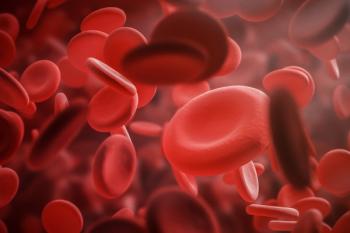
Statin use with elevated LFT
This case involves a patient with elevated liver function test and whether a statin should be used
HEALTH-SYSTEM EDITION
CLINICAL TWISTERS
Statin use with elevated LFT
A 45-year-old male, W.R., seen at your lipid clinic, has been taking atorvastatin 10 mg and atenolol 50 mg daily since his myocardial infarction with acute stent placement six weeks ago. His initial baseline levels were total cholesterol=300, HDL=30, LDL=190, triglycerides=400, with slightly elevated liver enzymes. Today his total cholesterol=213, HDL=32, LDL=115, triglycerides=324, but his ALT=120, AST=115. What do you recommend?
With W.R.'s slight liver function test (LFT) elevations before atorvastatin, consider his alcohol consumption, OTCs/herbals, and risk/history for hepatitis B or C. Daily consumption of > 48 gm of alcohol increases cirrhosis risk. Hepatitis C, the most frequent cause of chronic liver disease, affects about four million persons in the United States. Acetaminophen, niacin, vitamin A, iron, and some herbals can cause liver toxicity. Ruling these out, atorvastatin is likely the cause; 0.2%-2.3% patients experience apparent dose-related elevations of three times the upper limit of normal (ULN).
Currently, W.R.'s LFTs cause concern. Consider the following: temporary atorvastatin discontinuation then rechallenge, or reduce atorvastatin dose+ezetimibe, or continue current dose with follow-up LFTs in three weeks. Given the severity of coronary disease and lipid levels, the last option seems preferred because W.R. may not be forthcoming about alcohol consumption, but reduce it after discussion.
To reduce LDL from 190 mg/dl to < 70 mg/dl, a statin is usually necessary. W.R.'s current HDL and triglycerides suggest that, even at high doses of monotherapy, it is unlikely he will meet lipid goals (i.e., HDL > 40 mg/dl and triglycerides <150 mg/dl).
If LFTs stabilize at normal or near normal value, add-on therapies for HDL and triglycerides can be considered after lifestyle modifications. Low-dose time-release niacin may be considered with close monitoring. W.R. should enroll in cardiac rehab and see a dietitian. His sensitivity to adverse effects of lipid-lowering therapy means it is important to maximize nonpharmacologic therapy. If no contraindications exist, suggest that aspirin and/or clopidogrel (Plavix, Sanofi-Synthelabo) be added.
Scott Neel, Pharm.D.
Clinical Coordinator
Cape Canaveral Hospital
Cocoa Beach, Fla.
The National Cholesterol Education Program recommends aggressive lipid management for this very high risk patient. To reach optimal LDL-c and non-HDL targets of less than 70 mg/dl and 100 mg/dl, respectively, titration of atorvastatin (Lipitor, Pfizer) will likely be necessary. However, AST/ALT values approaching three times ULN warrant caution.
I suggest screening for liver disease and other causes of LFT elevations. If negative, continue current atorvastatin dose, repeating LFTs in six weeks. If LFTs have improved, continue the same dose of atorvastatin and repeat LFTs in six weeks. If LFTs are stable, consider modest titration of atorvastatin. If LFTs remain elevated, recommend a trial off statin and consider starting a different statin, since this may not be a class effect.
Leslie K. Nies, Pharm.D.
Clinical Pharmacy Specialist Clinical Pharmacy
Cardiac Risk Service Kaiser Permanente of Colorado
Kathy Hitchens. Statin use with elevated LFT. Drug Topics Aug. 23, 2004;148:HSE8.
Newsletter
Pharmacy practice is always changing. Stay ahead of the curve with the Drug Topics newsletter and get the latest drug information, industry trends, and patient care tips.
























































































































